“It’s like leaving the kitchen faucet on all year for one glass of water,” says Zach Freed, a hydrologist for the Nature Conservancy in Oregon. That’s how people in Oregon and throughout the US West have traditionally used spring water.
When European homesteaders first came west, spring water must have seemed like an endless resource. Homesteaders could find a potable spring and turn on the tap to provide water for their families and livestock. As the generations came and went, old ranches failed, and new ones sprang up. Springs came in and out of use, but it often happened that nobody ever turned off the tap.
A survey of 180 springs in Oregon found that 95% of the discrete springs, those that have a higher discharge over a smaller area, and 80% of the diffuse springs, those that have a lower discharge over a greater area, were in some way disturbed by human activity or livestock grazing. An article sharing the full results this survey is in review at Ecohydrology. Many had been developed as spring boxes – literally boxes dug into the ground just above the spring. The oldest spring developments are likely a century old, dating back to the Basque sheep farmers who grazed their livestock on the slopes of the Ochoco Mountains.
Many of these spring developments are no longer in use and others were constantly sending water to a trough that was only used by livestock a couple of times a day for a small fraction of the year. Beyond being a senseless waste of water, that’s bad news for the wildlife that rely on the springs for water and for the people who enjoy watching or hunting them.
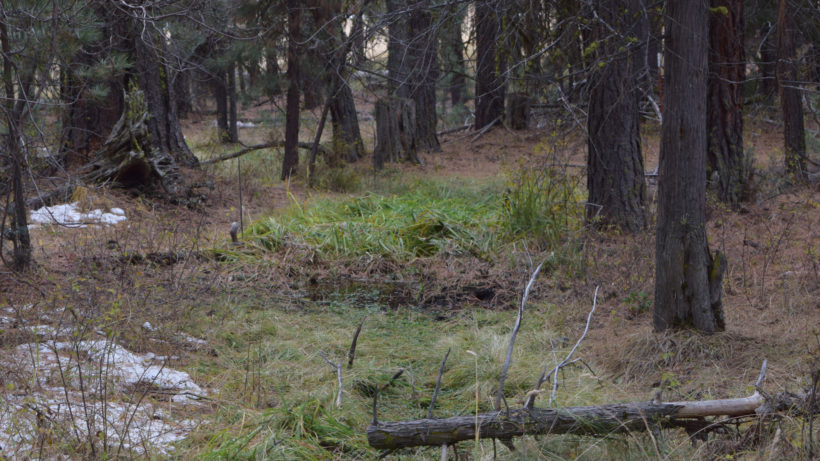
It doesn’t have to be that way. Researchers at The Nature Conservancy and the U. S. Forest Service are improving spring boxes so that ranchers can easily “turn off the faucet” when they’re not using it. That’s crucial because in arid and semi-arid environments, a steady source of water is disproportionally important ecologically and economically.
The MacGyvers of Water Use
The first rule of retrofitting an obsolete trough is to do it in a way that maintains the historic channel or water table level, even while cows are drinking. The second rule of retrofitting is to create something cheap and easy to work with. This calls for the spirit and ingenuity of MacGyver, the 80s (and recently rebooted) television hero who saved the day by creating heroic contraptions from everyday items. MacGyver doesn’t need high-tech gizmos; he assembles elaborate tools from duct tape and whatever else is at hand. The Oregon water “MacGyvers” took a very similar approach.
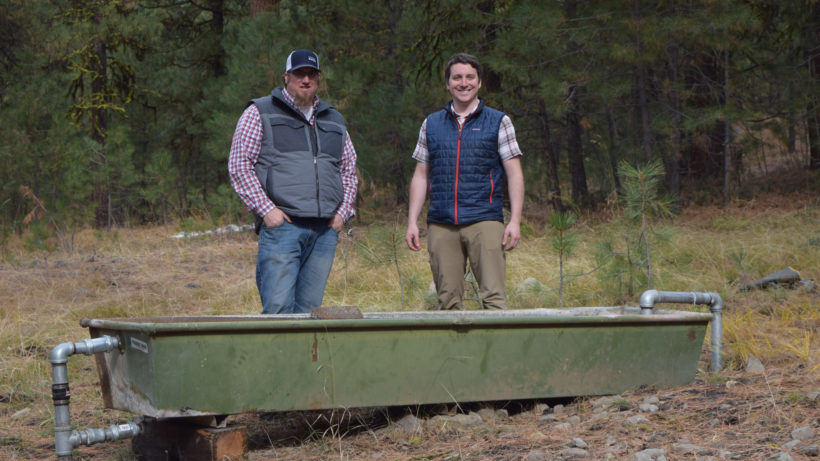
Freed worked with Juniper Hills Preserve manager, Andy Gray, and Doug Weber of the Forest Service to set a goal that all of the parts needed for each retrofit would be available at a local feed store – e.g. lots of PVC pipe and duct tape. That ensures that ranchers who want an ecologically friendly design aren’t priced out by installation or maintenance costs and it’s easy to learn to fix (as compared to other ecologically friendly choices like solar water pumps).
Two of these budget-friendly experimental retrofits have been installed and testing is underway to determine whether they can restore springs while maintaining water for livestock. One is at Horse Spring, a small fen fed by a diffuse spring in the midst of ponderosa pines and mixed-conifers, near the edge of Ochoco National Forest. Another is at Sand Spring, a discrete spring that feeds a stream in the Ochoco National Forest just north of Juniper Hills Preserve.
Different kinds of springs have different ecological goals and need different retrofits to meet their needs.
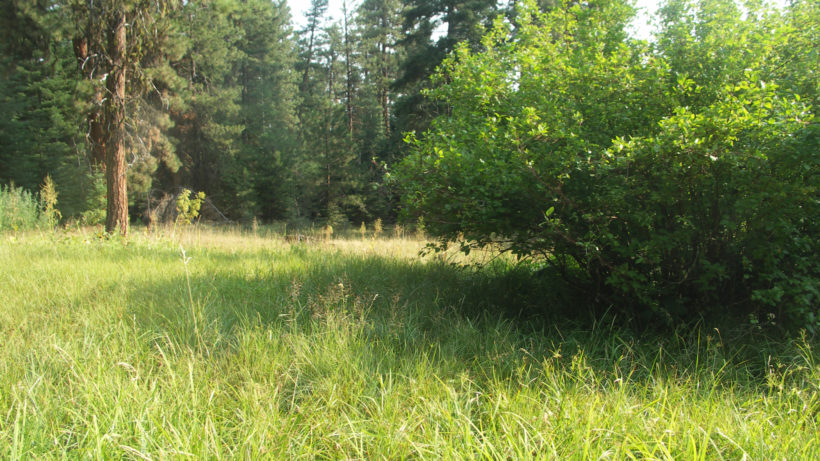
Horse Spring
There’s a light snow covering the fen at Horse Spring, giving it the deceptive appearance of solid ground. However, once we’re past the fence (designed to keep livestock out and allow wildlife in), our boots gently sink in the wet peat.
I can see small plants – some of them bryophytes that live only in springs like this one – growing in the trickle of water flowing down the mound. Freed explains that before they retrofitted the spring, this fen had completely dried out and the outlook was not good for these native plants.
“It’s a noticeable difference. There was very little water before and now it’s mucky, which is great,” says Freed.
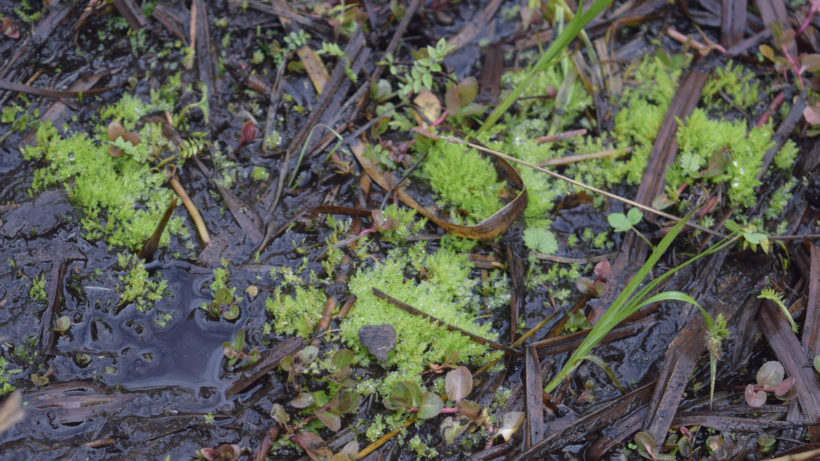
Under the snow, I can see the outline of a gentle mound with a small, unfrozen caldera pond in the middle – like a miniature volcano. Two buckets protrude from the snow. Freed says the buckets are covering pressure transducers, instruments used to measure water pressure and track the level of the water table, that the researchers use to track how well the retrofit works to keep the water table at the desired elevation.
The ecological goal is to maintain the level of the water table – as long as the water table is just above the outlet of the spring, the spring will continue to flow, providing water for a unique community of plants and for visiting wildlife like elk, mule deer, bees and butterflies. The team has designed a system that meets this goal while diverting enough for thirsty livestock.
Most of the livestock here are cattle. They come to drink at this trough in the summer months when ranchers use this land as a grazing allotment. Depending on the available feed in the allotment, cattle might need this water for two to ten weeks out of a year.
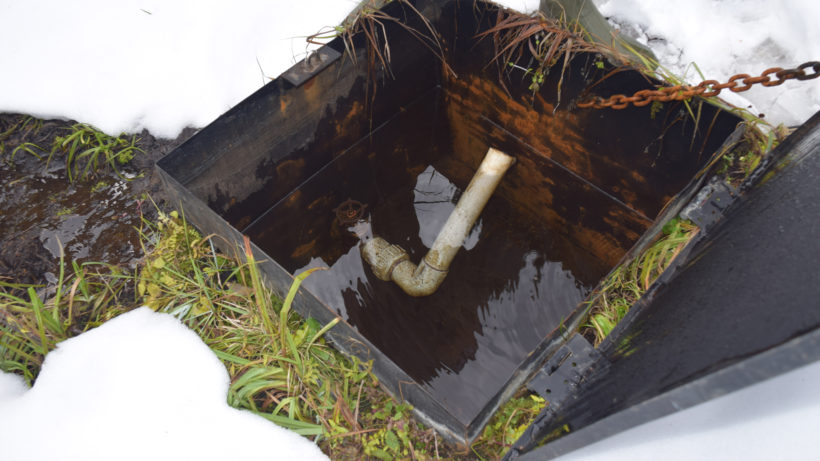
The system for sharing water starts with a spring box. Holes in the side of the box intercept the water, allowing people to divert it. A traditional spring box sends all of the water through one pipe – diverting it away from the natural spring and draining the water table down to the level of the pipe, which is sometimes a full meter below the ground, too deep to support the spring flora and fauna. The new spring box makes one simple adjustment – an elbow made from PVC can be turned to the desired level of the water table. This retrofit keeps the water table high enough for plants and animals to access it.
Just outside of the fenced area, I am flummoxed to see a giant tire. This tire is the trough receiving water from the spring box. Freed sees my confusion and explains that hunters camp here and sometimes troughs become a convenient object for target practice. Tires don’t rust and when they’re shot the rubber seals around the bullet — a traditional metal trough might spring a leak.
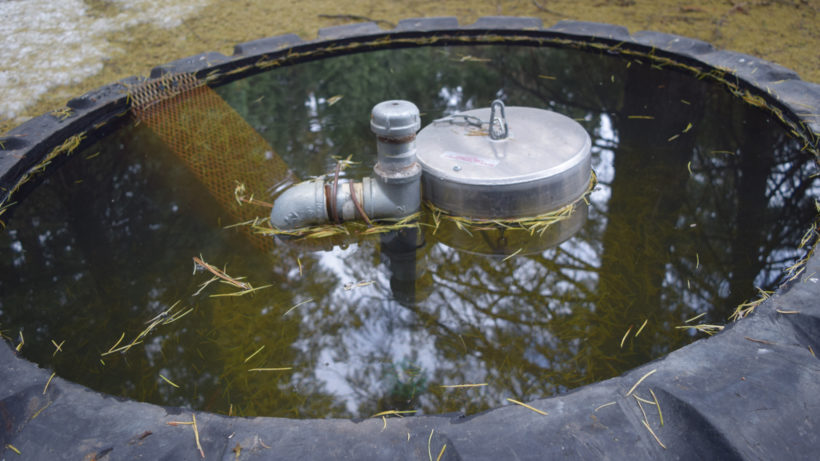
The design is ingenious, a large metal float valve (the bigger the better so that cattle don’t damage it) prevents diverting more water than needed from the spring when the trough is full – like a super-sized version of your household toilet. A small weep valve keeps water circulating to improve water quality and an escape pipe takes excess water back to the fen. An exit ramp for trapped wildlife completes the ensemble.
It may look funny, but once the team explained the design to local ranchers and hunters, they were excited that there’s a solution that can meet their needs and keep the spring healthy.
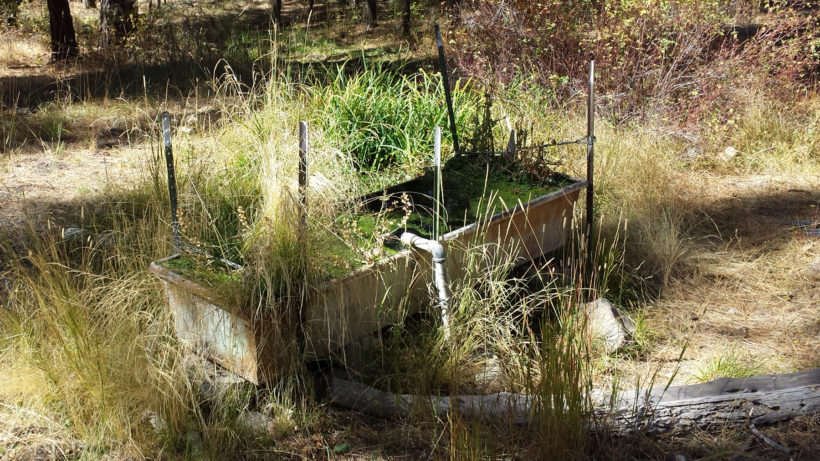
Sand Spring
Down a steep hill and into the woods we come upon Sand Spring, which feeds a small creek. This installation was a challenge even for a team that thinks outside the box.
The creek is home to the “charismatic megafauna” of the semi-arid spring community. These tiny snails are smaller than your fingernail, but they’re pretty adorable with their spiral shells – if you can find them!
The pristine pyrg can’t live long without water and it’s only through luck that they survived in this location at all. The original trough had filled with vegetation and overflowed – fortunately the overflow ended up trickling back into part of the historic stream channel, keeping some of the native plants and animals alive.
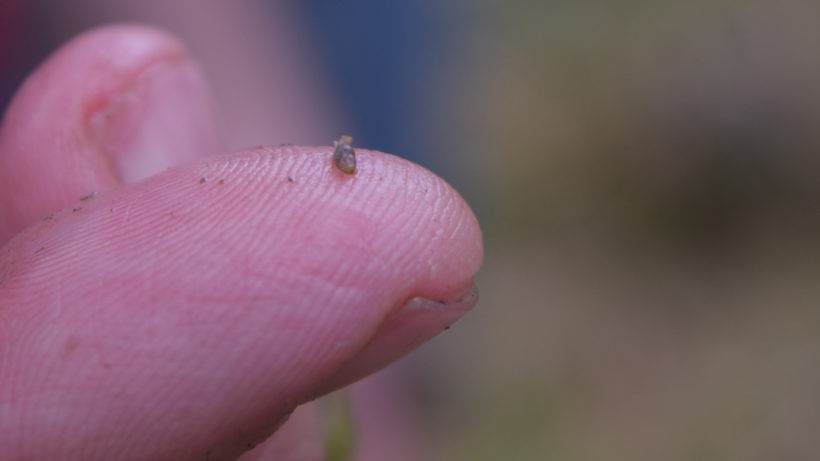
To protect the pristine pyrgs in the stream channel while they retrofitted the spring box, the team came up with a magic trick to keep water in the stream while they worked. They filled the old trough with water and then drilled a small hole in the bottom to let water slowly trickle out into the stream channel.
At Sand Spring, the ecological goal is to restore and maintain the historic stream channel – including the first ten meters, which had previously dried out when the trough was installed. Of course, the system is also designed to divert water to cattle when they need it.
The spring box has two blue valves that allow a user to control flow to both the spring and the trough – cattle can have more when they need it or that pipe can be completely shut off so all water goes to the spring when no cattle are present. An overflow pipe takes excess water straight to the brook so that it is never dry.
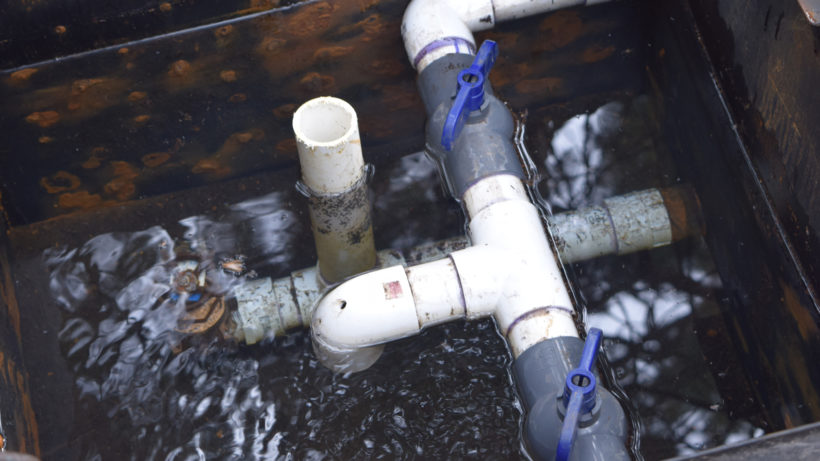
Nearby, the spring water fills a simple metal trough with a flow valve so water can move in and out of the trough as needed. The trough also has an overflow and drain that take water back to the spring brook.
Water has returned to the channel and there are promising signs of restoration everywhere. Plants are now growing around the spring box where the channel was once dry. Freed finds a pristine pyrg under a rock and points out signs of an elk wallow (where a male elk rolled around in the mud) farther downstream.
Monitoring here is focused on stream ecology. Regular photos taken over time at set points along the channel show vegetation returning. Soon the team will survey the restored portion of the channel to see if macroinvertebrates (like the pristine pyrg) and native plants (including bryophytes) have returned.
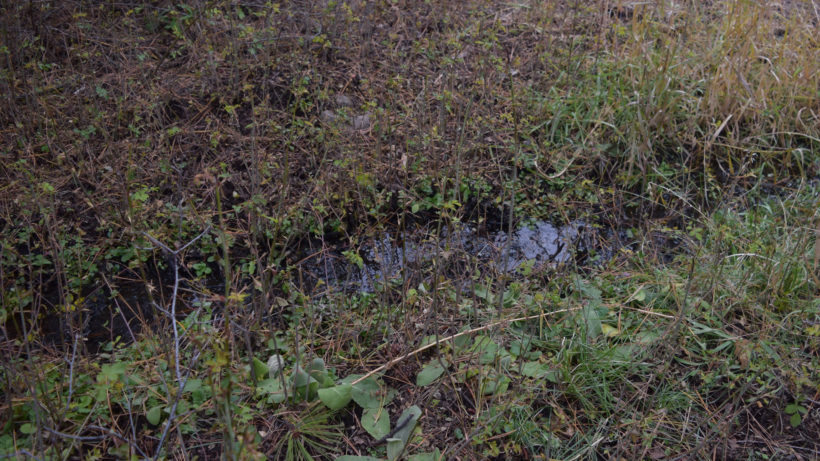
We Can Have Water for Livestock and Healthy Springs Too
So far, there has been one year of monitoring since the retrofits were installed. That is not enough to be certain of the results. Nevertheless, the preliminary and anecdotal evidence is promising.
If all continues to go well at Horse Spring and Sand Spring, these designs will be implemented in the Forest Service’s groundwater manual and could become standard use at springs managed by the agency. That information will also be freely available for ranchers interested in retrofitting springs on private land.
The MacGyvers prove that when people with different skillsets and backgrounds come together, they can find mutually beneficial solutions. Many situations will call for compromise, but sometimes we can truly meet everyone’s needs with a little PVC pipe and a lot of ingenuity.



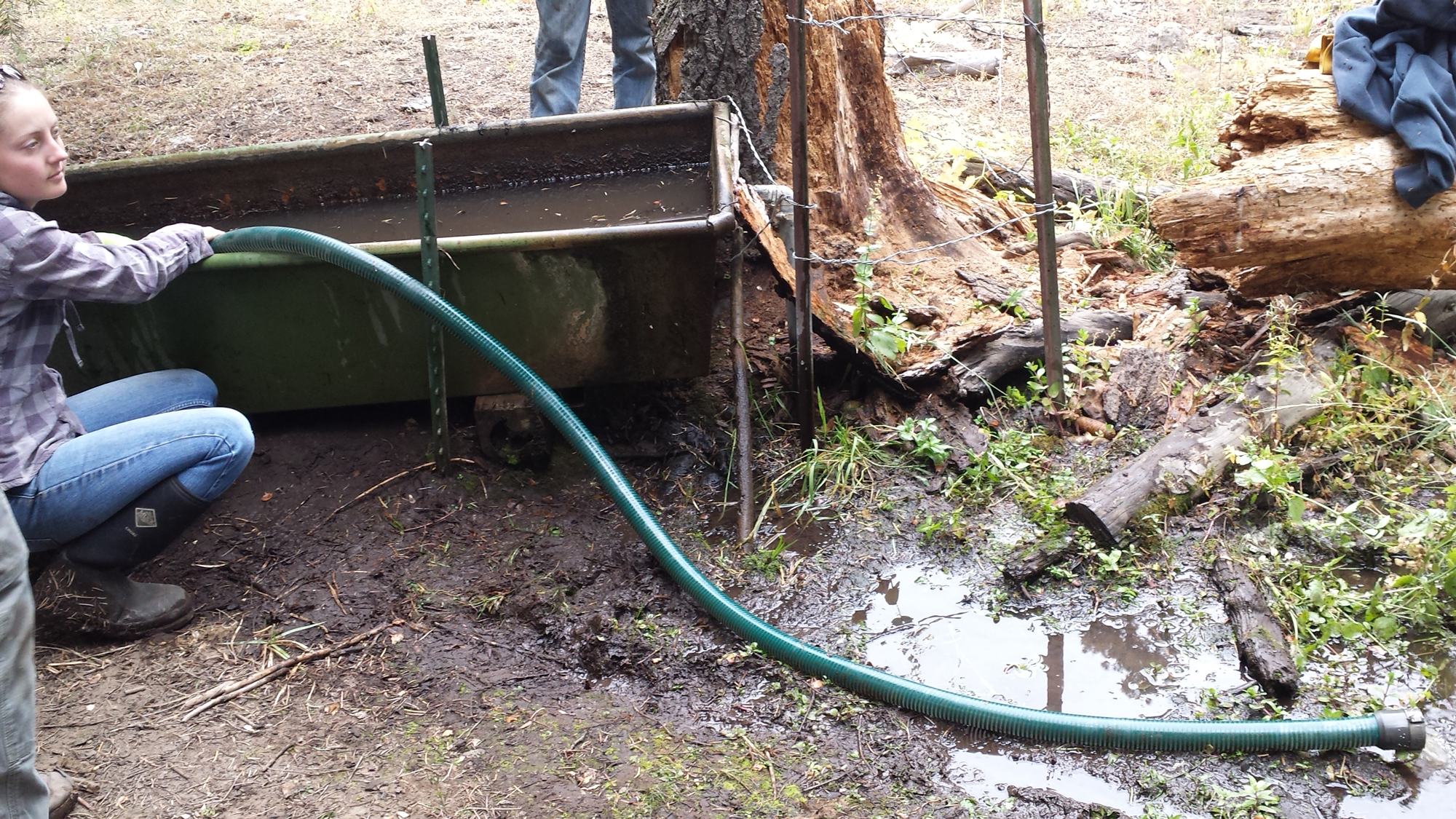

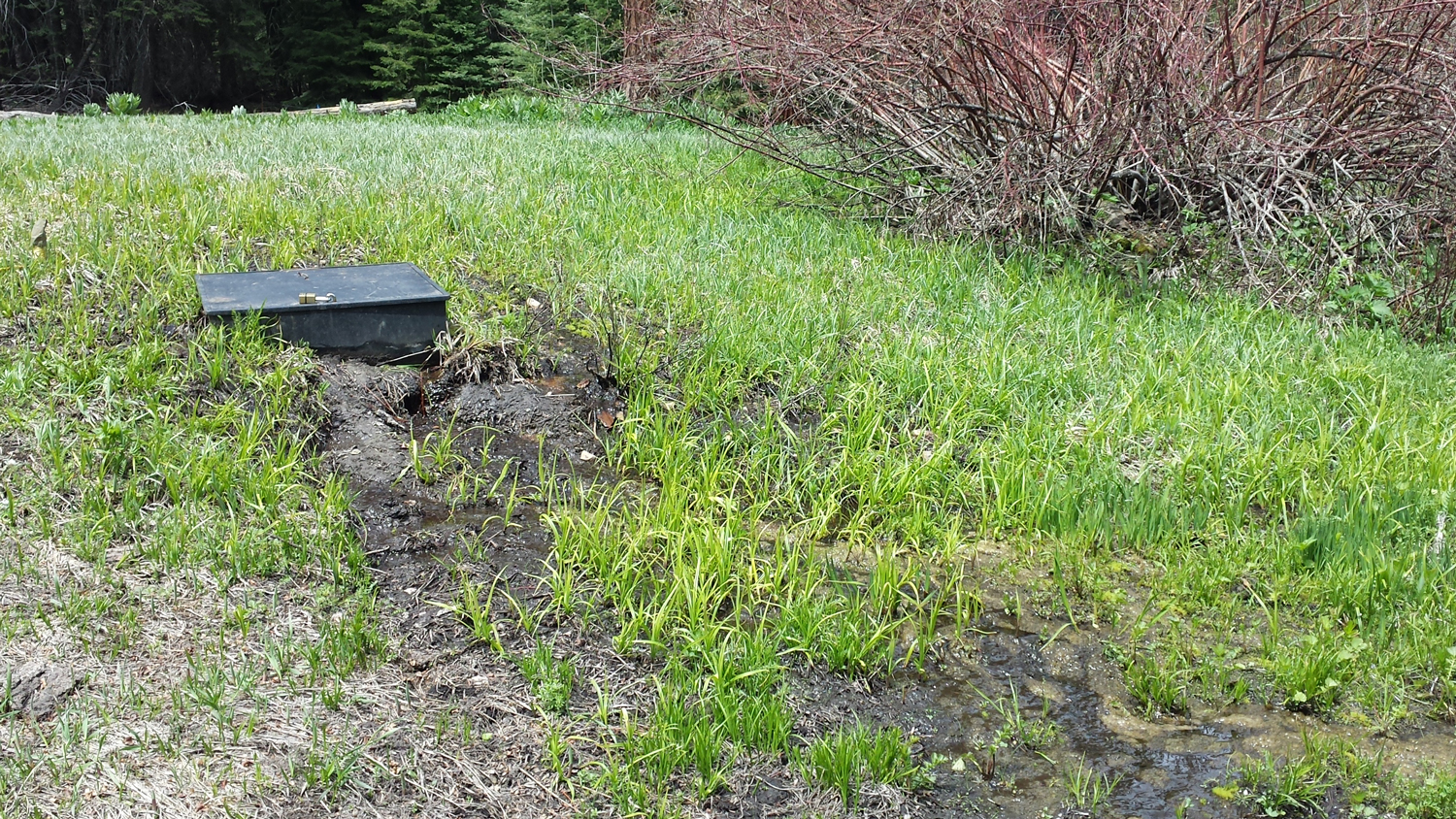
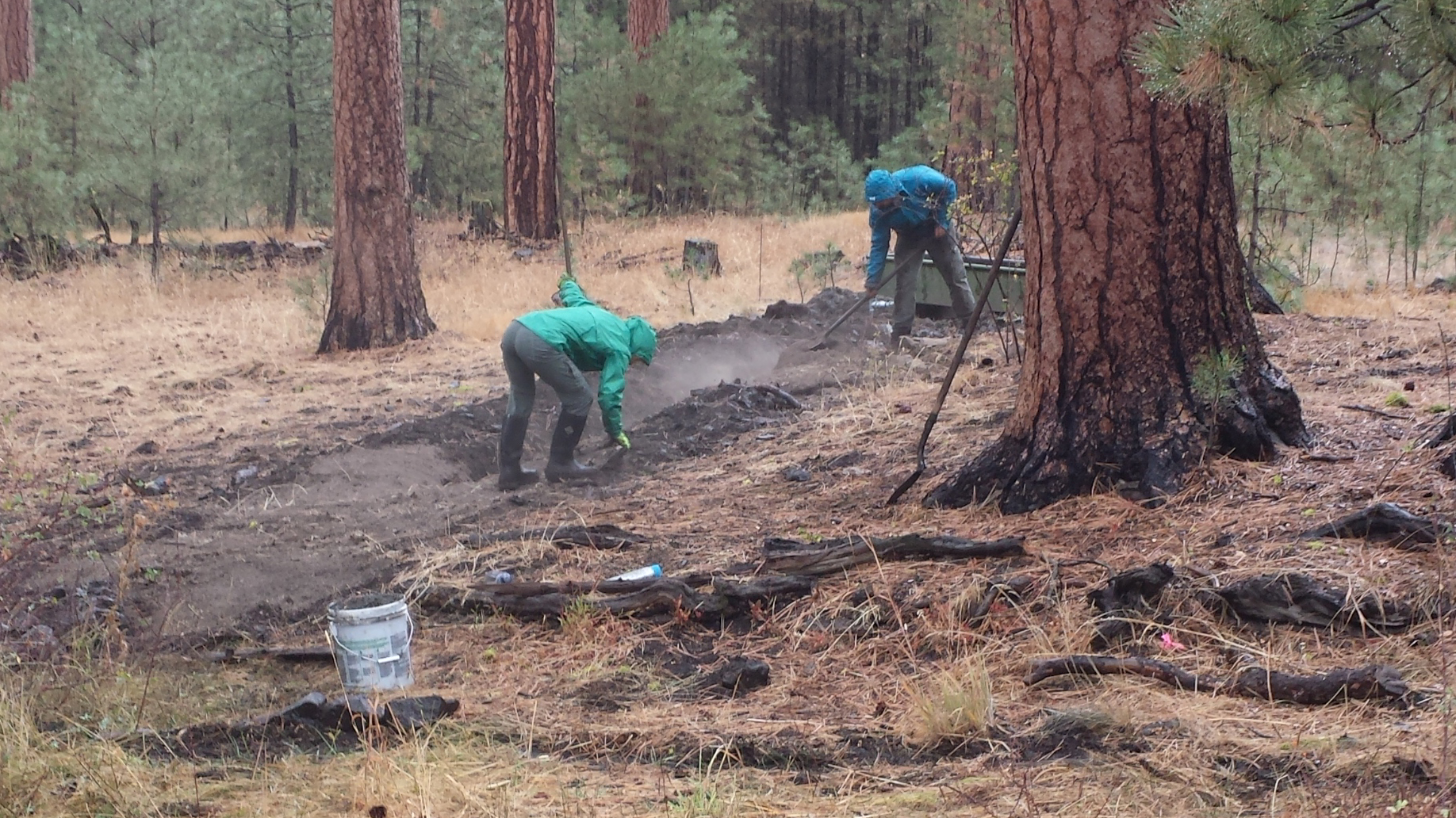



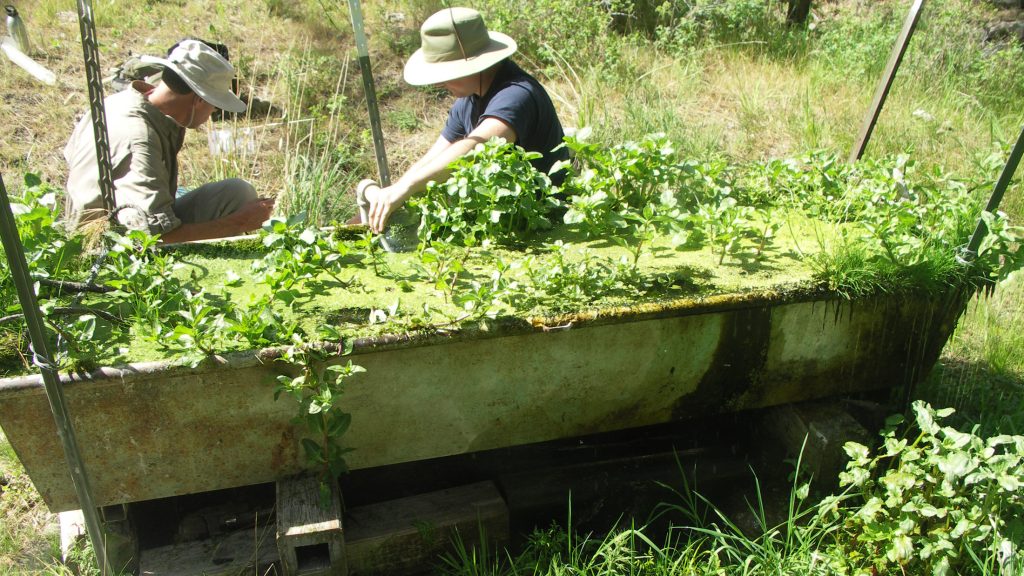



How can I obtain a copy of the Forest Service’s Groundwater Manual?
Hi Al, Here is a link to the USFS Groundwater Program’s publications page: https://www.fs.fed.us/science-technology/geology/groundwater/publications
It is too early for this version of the manual to incorporate the spring retrofits in the story. Thank you for your interest!
Comforting to read that there ARE people who are trying to return to nature rather than waste it! I hope this continues – there have to be many areas where this kind of “fix” would be possible.